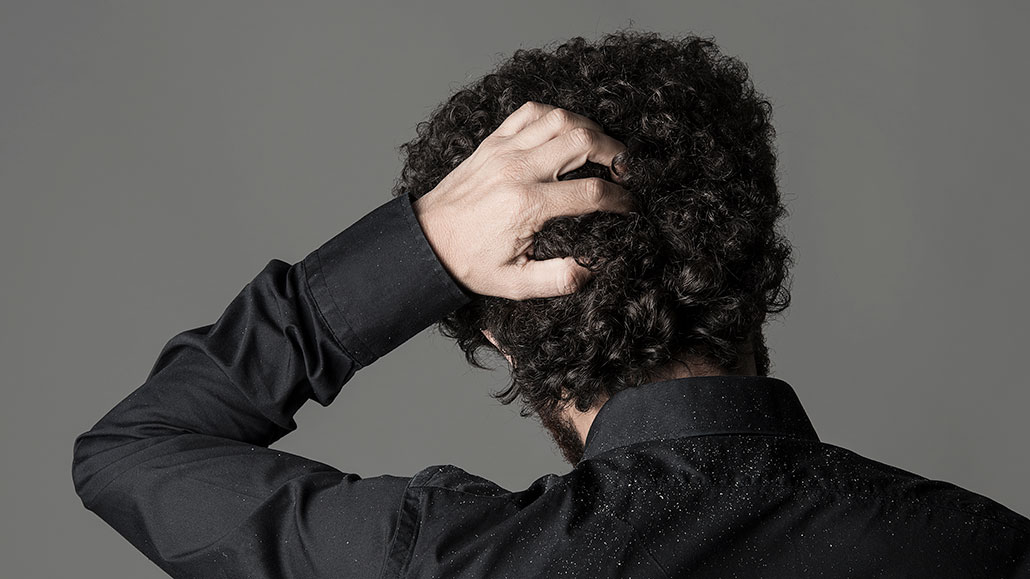Why you shouldn’t just brush off dandruff
It signals that microbes might be triggering an unhealthy change on your scalp

Dandruff makes the scalp itch, but it’s not a dry skin problem. Treating it may call for a change in how often you wash your hair, use of an over-the-counter dandruff shampoo, or even turning to a prescription shampoo.
Dandruff flakes on your hair or shoulders don’t look good. The itchy scalp that comes with it is no fun, either. In fact, although dandruff shows up on your hair, the condition actually starts with your scalp.
Dandruff is a type of dermatitis (Der-muh-TY-tis), or skin inflammation. One study estimated that half of us will at some point develop this condition. And one key time it may emerge is puberty.
Everyone’s scalp hosts a mix of microbes. This is known as its microbiome (MY-kroh-BY-ohm). Sometimes the normal proportion of some types to others gets messed up. This is known as a dysbiosis (Dis-by-OH-sis). In people with dandruff, certain types of yeast and bacteria are far more common, compared to people with healthy scalps.
Amy McMichael and others discussed some of the culprits in a July 2024 report in the Archives of Dermatological Research. She’s a dermatologist at Wake Forest University School of Medicine and the Atrium Health Wake Forest Baptist Medical Center. Both are in Winston-Salem, N.C.
People often make the mistake of thinking an itchy, scaly scalp is dry, McMichael says. If they add oil, though, they risk making matters worse. Dandruff is actually “a greasy, flaky problem,” she explains. Too much oil provides extra food for the harmful bacteria and yeast, driving the flake production. In fact, dandruff can affect parts of the body with glands that produce sebum, a natural oil.
Dandruff can develop in people with every hair type. However, Black people may have higher rates than other groups, says a 2015 study by researchers at the University of Miami School of Medicine, in Florida.
Hair-care practices might explain some of the difference, McMichael says. She and others have found differences in how often women of African and European ancestry shampoo their hair. Most Black women in the study said they washed their hair once every week or two. A majority of the white participants said they shampooed at least every other day.
Part of the reason for this difference may have to do with how curly their hair is.
The outer layer of hair is the cuticle. Straight hair with a smooth cuticle quickly looks dull when it gets oily, notes Gabriela Daniels. She’s a hair scientist at the London College of Fashion in England. (It’s part of the University of the Arts London.) But on hair with tight curls and coils, the shingles — bits of the hair shaft on its outer layer, or cuticle — may not lie flat. That can make it reflect light differently. So, it may not look dirty as soon, Daniels says.
More frequent hair-washing can help deal with dandruff, McMichael says. If you worry about shampoos drying out the hair, use them just near the scalp, she suggests.
If flaking is a problem, try shampoos labeled as formulated to deal with dandruff. If those don’t work, your doctor may prescribe you a stronger treatment.
And also use hair conditioners, McMichael advises. “It actually smooths the outer layer — the cuticle — much better than you can get with oil.” Be careful about using hair sprays and gels, she adds. These can dry hair, increasing the risk that strands will break.
In any case, if you notice a hair or scalp problem, talk to your doctor or another health-care expert right away. You might need help for dandruff. Or you might have a more serious skin or hair condition.
“The earlier that you come in, the better off you are,” McMichael says.







